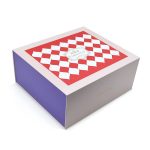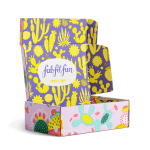
In an era of digital saturation and mass-produced uniformity, the tactile sensation of receiving a handmade packaging box creates a moment of pure magic. These aren’t just containers; they’re storytellers, brand ambassadors, and emotional connectors rolled into one beautifully crafted package. The resurgence of handmade packaging boxes represents a conscious shift toward authenticity, sustainability, and meaningful consumer experiences that linger long after the product inside has been enjoyed.
The psychology behind unboxing experiences reveals why handmade boxes create such powerful impressions. Research shows that 40% of consumers are more likely to share their purchase on social media when it comes in unique packaging, and handmade boxes naturally lend themselves to this shareable moment. The slight imperfections in handmade creations—the subtle texture variations, the unique patterns, the personal touches—trigger emotional responses that perfectly uniform machine-made boxes simply cannot replicate. These imperfections become signatures of authenticity that subconsciously communicate care, attention, and value.
Environmental considerations have become central to packaging decisions, and handmade packaging boxes often lead the sustainability charge. Many artisans use recycled materials, biodegradable elements, and natural dyes that leave minimal environmental footprints. Unlike mass-produced alternatives that prioritize cost-efficiency over ecological impact, handmade boxes frequently embody the circular economy principles that modern consumers increasingly demand. The very nature of handmade production typically involves smaller batches, reducing waste and allowing for more conscious material sourcing.
Brand differentiation through packaging has never been more critical. In crowded marketplaces, handmade packaging boxes serve as silent salespeople that communicate brand values before customers even see the product. Whether it’s a luxury cosmetics brand using hand-stamped boxes with botanical motifs or an artisanal coffee company employing boxes made from reclaimed wood pulp, these packaging choices tell compelling stories about brand identity. The handmade element suggests quality, craftsmanship, and attention to detail that often translates to perceptions of higher product quality.
The customization possibilities with handmade packaging are virtually limitless. Artisans can incorporate specific colors, textures, shapes, and functional elements that align perfectly with brand aesthetics and product requirements. From boxes with hand-torn edges that evoke rustic charm to precisely scored origami-inspired designs that showcase modern sophistication, handmade packaging can be tailored to support any brand narrative. This level of personalization creates memorable unboxing journeys that customers associate directly with the brand experience.
Practical considerations shouldn’t be overlooked when discussing handmade packaging boxes. While they require more time and skill to produce, their durability often surpasses that of mass-produced alternatives. Artisans select materials for both aesthetic appeal and structural integrity, ensuring products arrive in perfect condition. The hands-on construction process allows for quality control at every stage, resulting in packaging that protects while it delights—a combination that standard packaging struggles to achieve.
Economic implications of choosing handmade packaging might seem daunting initially, but the long-term brand value often justifies the investment. Customers who receive handmade packaging demonstrate higher loyalty rates and are more likely to become repeat buyers. The perceived value increase allows for premium pricing strategies, while the social media exposure generated by beautiful unboxing experiences provides free marketing that money can’t buy. When viewed through this lens, handmade packaging becomes not an expense but a strategic investment in brand building.
Implementing handmade packaging requires thoughtful partnership with skilled artisans or in-house development of craftsmanship capabilities. Brands successful in this space often start with limited editions or premium product lines before scaling their handmade packaging initiatives. The key lies in maintaining authenticity while meeting practical business needs—a balance that requires clear communication of brand values throughout the production process.
The future of packaging lies in creating emotional connections, and handmade boxes excel in this dimension. As consumers increasingly seek authenticity and meaningful interactions with brands, the humble packaging box transforms from mere container to experience centerpiece. The time, care, and creativity invested in handmade packaging communicate respect for both the product and the customer—a message that resonates deeply in our fast-paced, disposable culture.
Ultimately, handmade packaging boxes represent more than a trend; they signify a return to human-centered design in commerce. In choosing handmade, brands make a statement about their values while creating tangible connections with their audience. The unboxing moment becomes not just a transaction conclusion but relationship beginning—and in today’s market, that connection might be the most valuable product of all.




Leave a Message